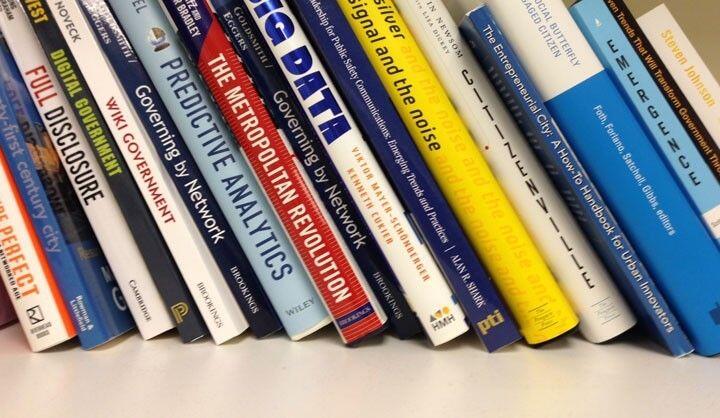- August 11, 2015
- Education
Our #DataReads series curates links and examples for those looking for an introduction to a particular civic data topic.
In the face of record-breaking levels of student loan debt, rising inequality, and a rapidly evolving tech landscape, educational issues have become a standby of blog posts and editorial pages alike. Some conclusions seem like common sense, but there’s diametric disagreement almost everything else. Business leaders warn of a “skills gap,” the idea that there are plenty of vacancies but that workers don’t have the right skills to fill them, contributing to unemployment, while some economists, including Paul Krugman, argue that the skills gap doesn’t exist at all. Many commentators call for greater investment in STEM education, hearkening back to Cold War era fears of superior math and science education in the Soviet Union, which gave rise to the quickly-abandoned “New Math” curricula of the 60s. Others urge students to turn to the liberal arts to learn the flexible thinking required in an unpredictable future.
With so many different accounts of what the problems in the American educational system are in the first place – let alone what to do about them – policymakers need conceptual tools that can assimilate as many as possible. We need a general model for how data analytics and new technology deliver value in the education sector supported by research, and a complement of real-world examples to help illustrate it.
Most educational technology systems do one of three things.
Efficiency. These are technology solutions that allow for operational savings through data-sharing and process improvement. Managing a campus’ physical plant more efficiently, streamlining administration, or improving workforce management can free up resources for educational institutions to reinvest in their core mission.
UMass-Amherst, Massachusetts’ flagship public university, used IBM TRIRIGA software to integrate its data on space use across its 11 million square feet of facilities. Previously, it was simply “not possible to produce floor plans illustrating current space use among departments,” according to IBM. By developing an advanced data tool to manage its facilities information, UMass will both realize savings and create more value for users across departments.
Personalization. With the rise of “Bring Your Own Device” and 1:1 laptop and tablet programs in K-12 schools, there are growing opportunities to use these new platforms to supplement the traditional classroom experience. While teachers have always personalized lessons to help students in an ad hoc way, using learning analytics allows us to scale up and systematize personalization in a dramatic way.
The Learning Analytics Workgroup at Stanford has prepared a report that details steps to building the learning analytics field, with five year outlooks for developments in human capital, research, and policy. It’s a useful read for policymakers and educators interested in a high-level view of where learning analytics are headed.
Carlos Monroy et al. have published a useful paper in the Journal of Learning Analytics, “A Strategy for Incorporating Learning Analytics into the Design and Evaluation of a K-12 Science Curriculum,” that offers an effective set of steps for developing and deploying learning analytics that could be put in place at the state or school district level.
“Blended Learning,” a combination of online tools and a traditional classroom experience, is an effective framework for replacing one-size-fits-all assignments with personalized, online instruction. The National Association of Independent Schools has published an extensive report showcasing effective examples of blended and fully online programs at private and parochial schools nationwide.
Networking. Education is characterized by hand-offs. K-12 students are constantly shuffled from school to their homes, to athletic and extracurricular programs, to relatives, to after-school program providers, to social services caseworkers – and that doesn’t even cover switching schools or advancing from one grade to the next. With each transition, there’s a chance that vital information is lost. Tech tools have the potential to link parents, teachers, mentors and peers in a collaborative network dedicated to ensuring children’s success, according to the Deloitte Report Digital Education 2.0.[1]
A study published in the journal Education and Information Technology showed that after participating in a pilot program where they were encouraged to collaborate by text message throughout the school day, teachers reported that they used their mobile phones to monitor students’ progress, share information about behavior, communicate with parents, and make changes to lesson plans. Formalizing and expanding this kind of ad hoc networking is an effective strategy for responding to students’ needs more quickly and thoroughly.
Data tools and other educational technology are already offering immense opportunities to the school systems that are ready for them. However, with significant disagreement over what the key problems in education are and how to fix them, it’s important to develop heuristics that can be used to understand potential data and technology programs in a generalized way. By thinking about whether innovations offer gains in Efficiency, Personalization, or Networking that empower students, teachers, and parents, we can effectively link new educational technology systems to the existing literature, scaling up best practices and improving our schools and communities.
[1] See pp. 135, where the author, Dr. Preeta Banerjee, defines the first of three “connectors” that Digital Education 2.0 will be built around: “An integrated digital education ecosystem: Parents, teachers, peers, and administrators, as well as individuals outside the formal educational system such as mentors and potential employers, form a collaborative network to deliver instruction to and guide the student at the center of the ecosystem.”
Top photo credit Katherine Hillenbrand




